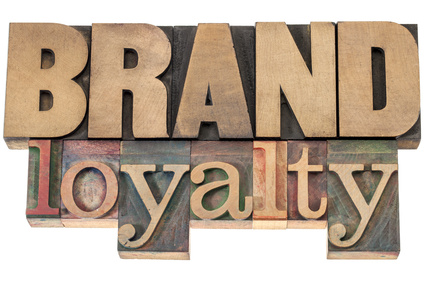Lean Sales and Marketing for Manufacturers
Studies show that up to 90% of all work done in a business office is waste. Locating files, looking up data, manually generating reports, retyping...
4 min read
Mark Parent
May 10, 2021 3:58:36 PM EDT
.png)
If you are a manufacturer, here’s a question: are your sales and marketing efforts as efficient as they could be? Chances are they’re not. Both teams likely spend too much time on redundant, manual tasks, use disconnected systems and processes, and are generally out of sync. Does this sound familiar?
These inefficiencies are due in part to a shared principle affecting both sales and marketing and is rooted in the 8 Wastes of Lean Manufacturing. Luckily, a new approach to remove these wastes and their associated costs is available. This approach is called Lean Sales and Marketing (LSM) and helps companies remove waste, gain efficiency, reduce costs and maximize value.
If you work in manufacturing, you’ve probably heard of Lean Manufacturing. Lean Manufacturing focuses on making the production process more efficient. Lean includes types of waste within an operation, seven of which are production process-oriented, while the eighth waste refers to management’s ability to utilize personnel.
Lean is usually applied to manufacturing environments, but it can be applied to any business operation. Co-developed by the Michigan Manufacturing Technology Center-Northeast and Inbound 281, Lean Sales and Marketing (LSM) are lean manufacturing principles specifically related to sales, marketing and customer service activities, following all the best-practice mandates of the lean methodology to eliminate waste, reduce inefficiency and maximize value.
LSM uses tools like marketing automation and inbound marketing to automate sales and marketing processes and reduce waste and improve efficiencies in your operations. Inbound marketing attracts customers by creating valuable content like blog articles, emails, social posts and experiences specifically tailored to them, while marketing automation is the engine that drives the delivery and management of this content.
Here’s how LSM eliminates wastes from the sales and marketing process.
What This Waste Is: Defects impact time, money, valuable resources and ultimately customer satisfaction and include lack of proper documentation or standards, poor design and lack of proper quality control. In sales and marketing, defects can appear in the form of inaccuracies, like mistakes in writing, communication and inconsistent messaging.
How LSM Eliminates This Waste: Using tactics like marketing automation, these inaccuracies can be mitigated via pre-written messages, ready for sales and marketing to share with prospects and clients. Messages can be customized by sales, but are made consistent and mistake-free when created ahead of time.
What This Waste Is: Unnecessary steps that don’t add value, excess processing is a sign of poorly designed processes and relies on inspections, rather than the process being designed to eliminate errors. Data entry in multiple systems, unused reports and overly complicated or cumbersome processes are examples.
How LSM Eliminates This Waste: Using a marketing automation system, complicated processes are mapped out via predetermined workflows and happen automatically, limiting extra processing. These include automated reply messages and marketing messages, as well as the automatic creation of sales leads in a CRM system.
What This Waste Is: In lean, overproduction refers to components being created before they’re needed in the next phase of the production process. Sales and marketing see overproduction in the form of leads that are not qualified enough, essentially too many leads for sales. This creates wasted time pursuing leads that are not sales ready, or not a good fit in general.
How LSM Eliminates This Waste: An inbound marketing strategy providing valuable information to leads, combined with marketing automation, will help produce more sales-ready leads.
What This Waste Is: Waiting refers to idle equipment and, in the case of sales and marketing, idle salespeople with not enough leads to follow up on. Inbound marketing and marketing automation work together to solve this problem.
How LSM Eliminates This Waste: Designed to “always be on,” inbound marketing creates value and interested prospects with valuable content that is searchable, in exchange for their contact information. Even if contact info is not provided right away, activity is retroactively stored in a marketing automation database. Leads are then contacted immediately if “warm” enough or if they requested to be contacted or can be followed up on by sales once enough activity warrants it.
What This Waste Is: In lean waste, inventory refers to purchasing or making items before they are needed and is wasteful, mainly due to resulting holding costs. In sales and marketing, this “waste of waiting” can be seen in website contact requests sent to a centralized inbox.
How LSM Eliminates This Waste: Marketing automation can solve this issue by automating who receives the requests for faster response time and also sending automated replies.
What This Waste Is: Transportation refers to moving products that are not actually required in a given process. Examples are movement of data, approvals and excessive email attachments. As leads make their way through the sales and marketing funnel, for example, there is a chance that they will not be followed up on, as well as sales knowing the complete history of the lead.
How LSM Eliminates This Waste: A centralized CRM platform can solve these issues, with sales and marketing automatically assigned and notified of their steps in the process.
What This Waste Is: Motion in lean manufacturing refers to all unnecessary movement of people, raw materials and equipment, resulting in non-value-added time and increased costs. Siloed operations are a common example in lean, as they are in sales and marketing. This creates unnecessary communication to acquire information.
How LSM Eliminates This Waste: A marketing automation and CRM system in place will help align sales and marketing, allowing both departments to access information from a single source and eliminating waste from requesting information. Performance metrics can also be accessed in one place, versus multiple platforms.
What This Waste Is: Waste can occur when not all resources are being fully utilized, including people. This includes assigning employees the wrong tasks for which they are not properly trained.
How LSM Eliminates This Waste: LSM helps make sure sales people focus their efforts on sales activities and marketers work on marketing. With LSM, sales doesn’t have to worry about writing content or maintaining spreadsheets or generating reports. Sales teams can direct their efforts toward customers and prospects, making the best use of their talents.
LSM can help, no matter what size your team is. Affordable and adaptable, the principles of LSM can be applied to companies of all sizes, including yours.
Flexible solutions are available in all shapes and sizes.

Studies show that up to 90% of all work done in a business office is waste. Locating files, looking up data, manually generating reports, retyping...

The Lean Inbound Marketing Methodology Explained Lean inbound marketing is an approach to sales, marketing, and customer service that combines the...

Research by Inc. Magazine found out something most of us in business already know: it costs up to 10x more to gain a new customer or client than it...